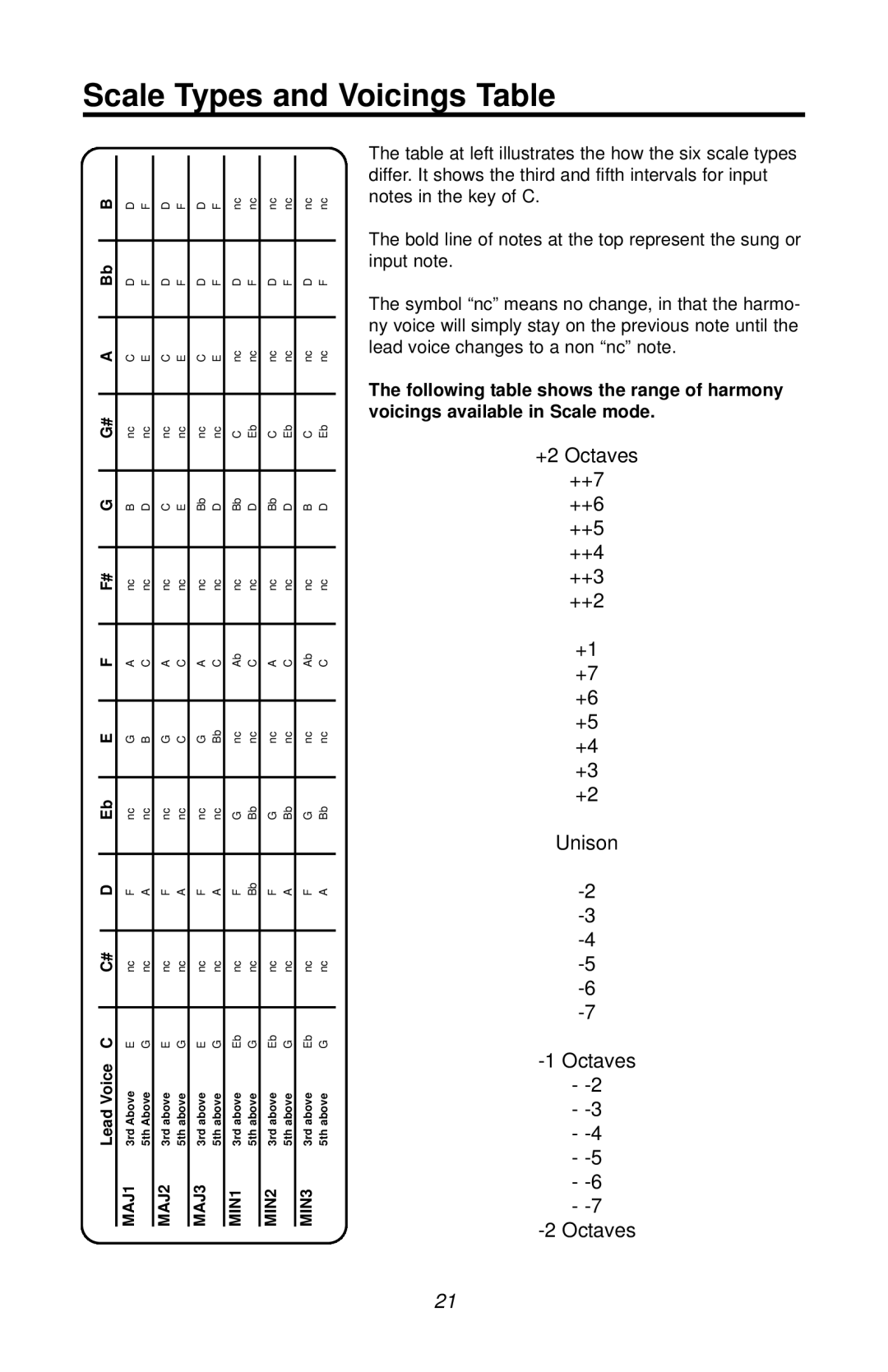
Scale Types and Voicings Table
B | D F | D F | D F | nc nc | nc nc | nc nc | |
|
|
|
|
|
|
| |
Bb | D F | D F | D F | D F | D F | D F | |
|
|
|
|
|
|
| |
A | C E | C E | C E | nc nc | nc nc | nc nc | |
|
|
|
|
|
|
| |
G# | nc nc | nc nc | nc nc | C Eb | C Eb | C Eb | |
|
|
|
|
|
|
| |
G | B D | C E | Bb D | Bb D | Bb D | B D | |
|
|
|
|
|
|
| |
F# | nc nc | nc nc | nc nc | nc nc | nc nc | nc nc | |
|
|
|
|
|
|
| |
F | A C | A C | A C | Ab C | A C | Ab C | |
|
|
|
|
|
|
| |
E | G B | G C | G Bb | nc nc | nc nc | nc nc | |
|
|
|
|
|
|
| |
Eb | nc nc | nc nc | nc nc | G Bb | G Bb | G Bb | |
|
|
|
|
|
|
| |
D | F A | F A | F A | F Bb | F A | F A | |
|
|
|
|
|
|
|
|
C# | nc nc | nc nc | nc nc | nc nc | nc nc | nc nc | |
|
|
|
|
|
|
| |
C | E G | E G | E G | Eb G | Eb G | Eb G | |
Lead Voice | 3rd Above 5th Above | 3rd above 5th above | 3rd above 5th above | 3rd above 5th above | 3rd above 5th above | 3rd above 5th above | |
|
| MAJ1 | MAJ2 | MAJ3 | MIN1 | MIN2 | MIN3 |
|
|
|
|
|
|
|
|
The table at left illustrates the how the six scale types differ. It shows the third and fifth intervals for input notes in the key of C.
The bold line of notes at the top represent the sung or input note.
The symbol “nc” means no change, in that the harmo- ny voice will simply stay on the previous note until the lead voice changes to a non “nc” note.
The following table shows the range of harmony voicings available in Scale mode.
+2 Octaves
++7
++6
++5
++4
++3
++2
+1
+7
+6
+5
+4
+3
+2
Unison
-
-
-
-
-
-
21
